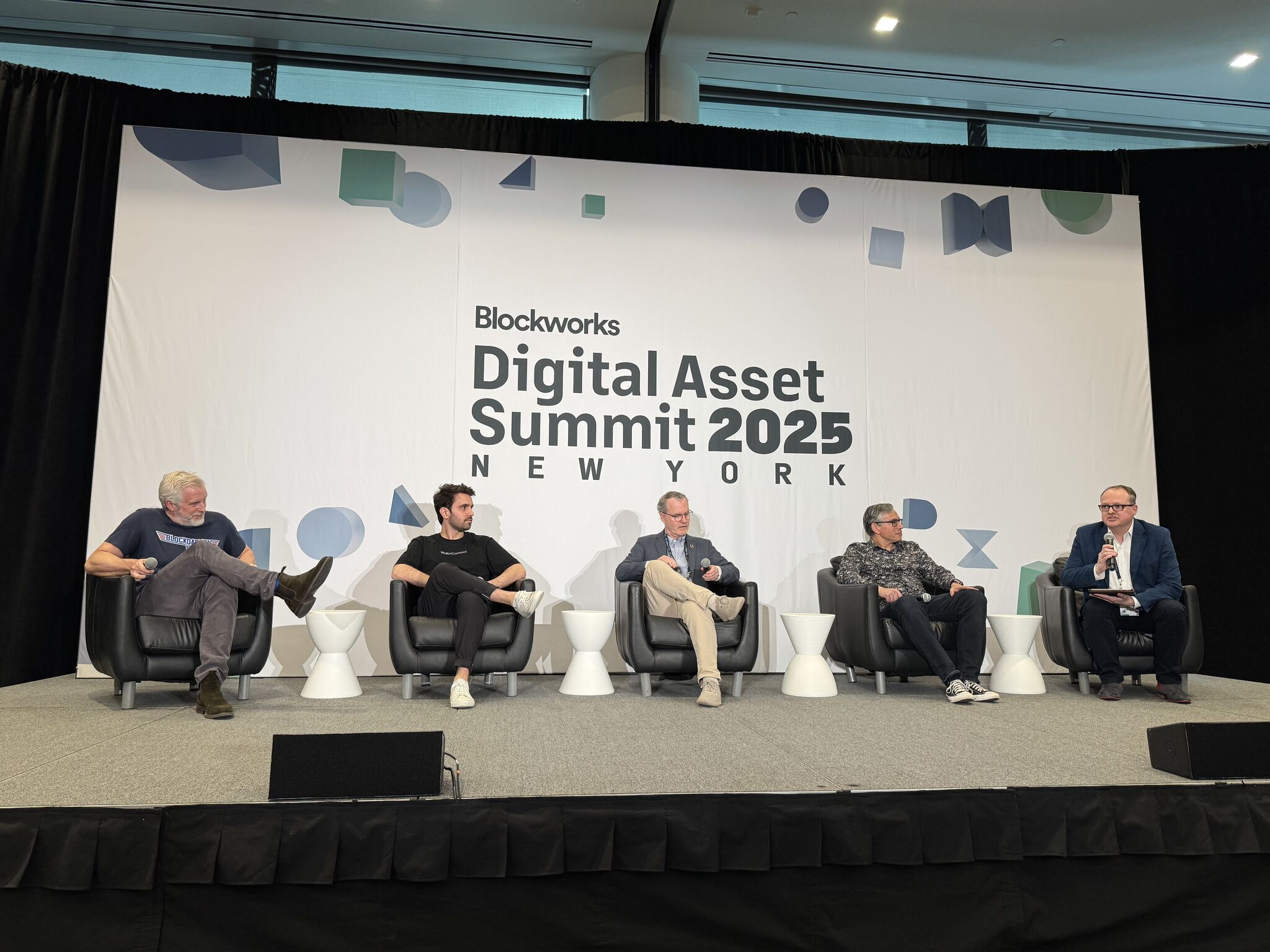In the evolving digital landscape, the complexity of business interactions and transactions within and across enterprise ecosystems continues to escalate. Traditional ERP systems, while adept at vertically integrating data and automating business processes within a single entity, stumble when adapting these streamlined workflows to external partnerships and multi-party collaborations. These challenges are not confined to ERP systems alone. Conventional strategies to horizontally integrate digital business processes across multiple organizations grapple with issues such as manual data reconciliation, expensive integrations, high latency, and scalability constraints to mention a few.
The Baseline Protocol offers a new solution to the age-old challenges of data consistency and coordination in multi-party business automation. Unlike traditional methods, which often lead to data silos, the protocol ensures secure, private, and streamlined data synchronization across parties. Leveraging zero-knowledge cryptography, data is shared in a manner that aligns with stringent data protection standards such as GDPR and CCPA, shielding businesses from potential regulatory pitfalls. Building on zero trust principles, it ensures that no party needs to inherently trust another, fortifying security measures further. This advanced approach facilitates interoperability among enterprise systems, creating secure multi-party workflows that are capable of transcending organizational borders. By acting as a middleware later between varied enterprise systems, the Baseline Protocol ensures data consistency without revealing sensitive data or needing a middleman, thereby slashing reconciliation costs without compromising security in multi-party business interactions.
Evolving Enterprise Solutions with BRI-3: A Community-Driven, Open-Source Reference Implementation
Launched in March 2020, the Baseline Protocol is a collaborative open-source community project managed by the Enterprise Ethereum Alliance and supported by Oasis, designed to advance secure and private digital business coordination among multiple parties. As it stands, the technical specification of the Baseline Protocol is under enhancement and refinement, aimed at earning recognition as an official standard by Oasis, a prominent standards-developing organization.
The development of Baseline Reference Implementation 3 (BRI-3) plays a crucial role in advancing the Baseline Protocol Standard and was an initiative set by the Baseline Technical Steering Committee for the protocol’s 2022 roadmap. A reference implementation serves as a vital blueprint for illustrating the practical application of a specification, acting as a guide for other implementations and ensuring consistency and adherence to the intended design. Even further, a reference implementation lays the groundwork for the implementations of a particular protocol, which not only provides a starting point for developers to build on top of, but allows them to avoid the time-consuming step of building it themselves. BRI-3 is crafted with a dual purpose in mind: to provide unparalleled clarity and simplicity, while also elucidating the intricate layers of the protocol. Thus, this implementation will foster a deeper understanding of the protocol to encourage wider adoption from the open source community of developers and interested enterprises. BRI-3 also adopts a vendor-agnostic approach to ensure adaptability across various platforms and encourage a development environment that is not confined to specific technologies.
BRI-3, once completed, will provide several other capabilities such as laying the groundwork for Baseline Protocol Software Development Kits (SDKs). SDKs, as an all-encompassing set of development tools in a single package, simplify the process for developers to create Baseline Protocol applications. Furthermore, a matured BRI-3 paves the way for demonstrating interoperability between different Baseline Protocol implementations, a key step towards standard approval. In enterprise systems, interoperability, or the ability for different systems and technologies to operate together cohesively is crucial. In the case of BRI-3, it ensures that varied systems can collaborate together to share data and synchronize state in a private and trustless manner without friction.
BRI-3 Reaches Beta Version
The development of BRI-3, which began in August 2022, was backed by the Baseline Protocol 2022 Grants Program, raising $100,000 from the Ethereum Foundation and ConsenSys Mesh to boost the Baseline Protocol’s open-source community initiatives. Led by a team of six Baseline Core Developers, BRI-3 has successfully navigated through its development stages, meeting 4 of its 5 milestones. The achievement of Milestone 4, announced at the end of September 2023, not only marks a significant stride in its development, but also signals the advent of BRI-3’s Beta phase. Throughout the rest of this section, we’ll take a closer look at how the simple use case chosen for BRI-3 is executed and examine it in the context of the Baseline Standard.
Use Case
BRI-3 Beta implements the “baselining” of invoice data. This simple use case allows counterparties to digitally exchange invoice documents (state objects), represented as payloads, and synchronize this data between their systems of record, while selectively shielding sensitive information. These invoice documents can be cryptographically verified to determine they possess the correct source, data integrity, and state against correctly applied business rule validation/transformation. The manner in which this application has been developed also holds the door open to future scenarios for this use case, whereafter exchanging an invoice, zero knowledge proofs can prove acceptance of that invoice to a third party, such as a regulator, without exposing the private information of the invoice.
Enhancements and Techniques:
State Storage & Merkelization
BRI-3 Beta implements the ‘merkelization’ of data payloads, which transforms state objects into merkle tree data objects called ‘state trees’. Furthermore, the evolution of these state objects over time is captured and ‘merkelized’, forming a data object called a ‘history tree’. A specifically designed data structure known as the ‘BPI Account’ is used to store both the state tree and its corresponding history tree. This BPI Account is intentionally associated with a particular workflow and is co-owned by the BPI subjects who are participants in that workflow. Such a design ensures accurate tracking, versioning, and state validation of the important data contained within a workflow throughout the lifecycle of a multi-party process. These merkle trees also allow this validation to occur in a manner that is privacy-preserving.
Virtual State Machine
BRI-3 Beta implements the Virtual State Machine (VSM), capable of deterministically processing any state change request transactions in a privacy-preserving and cryptographically verifiable manner. In the case of a BPI, a state change request occurs from initiating a transaction to execute a workstep. In BRI-3 Beta, the VSM is capable of identifying, gathering, and processing eligible transactions. The VSM, as implemented in BRI-3, runs on a cycle that can be configured. Once the VSM updates a submitted transaction to a status of “processing”, it is validated for execution. Requirements such as verifying the transaction’s digital signature against the sender’s public key ensure every transaction submitted is authentic. Once the transaction is accepted, the VSM kicks off the transaction’s execution and updates the state of the workflow upon completion.
Transaction Execution and Zero Knowledge Processing
To execute transactions, BRI-3 Beta’s VSM uses a transaction’s associated workstep data to fetch zero knowledge artifacts that can be used to prove the correct application of business logic over the payload’s state object. Much of a Baseline Protocol Implementation’s security comes from this step. In order to finalize a transaction, a zero knowledge cryptographic proof of correctness encapsulating this computation must be generated. Cryptographic data objects generated in this step such as the merkelized payload, witness, and transaction hash are returned to the VSM as part of processing a transaction. These artifacts are used to track and update the state of the workstep’s state object and provide a tamper proof timestamp of the workstep’s correct execution accessible by third parties once the transaction is finalized.
Milestone 5
The final milestone for BRI-3 is on track for completion in the first half of 2024. The core devs have several open issues outlining the planned features for this release. Features which have already been added to the backlog include bolstering the solidity contracts required to deposit proofs of workstep execution on-chain, implementing mechanisms to attach pre-compiled circuits to specific worksteps and workflows, and squaring away technical debt.
Stay Tuned: Visit our website and follow us on our social channels for upcoming news and demo announcements.
Note: This blog invites readers and developers to explore the implementation and engage with the Baseline Core Devs Community to garner deeper insights and participate in the ongoing innovation within the Baseline Protocol ecosystem.


